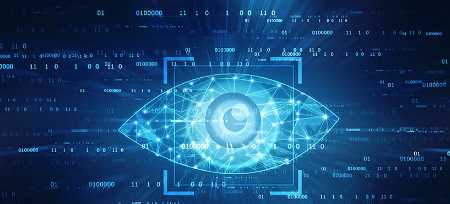Computer Vision is a field of study focused on enabling computers to interpret and analyze visual data from the world around us. The goal of Computer Vision is to enable computers to perceive, understand, and interpret visual data in the same way that humans do. The applications of Computer Vision are widespread and include autonomous vehicles, security systems, medical imaging, and more.
How does Computer Vision work?
The process of Computer Vision involves the use of algorithms and mathematical models to analyze and interpret visual data. This data can come in the form of images, videos, or other types of visual media. The algorithms used in Computer Vision are designed to identify patterns and features within the data, which can then be used to make inferences and predictions.
There are several key components involved in the process of Computer Vision. These include:
Image Acquisition: The first step in the process of Computer Vision is to acquire the visual data. This can be done using a variety of devices, such as cameras or sensors.
Image Processing: Once the visual data has been acquired, it must be processed to extract useful information. This can involve tasks such as filtering, smoothing, and edge detection.
Feature Extraction: After the data has been processed, features can be extracted from it. Features are defined as distinctive attributes of the data that can be used to differentiate it from other data.
Object Recognition: The next step is to recognize objects within the data. This can be done by comparing the features of the data to a database of known objects.
Inference: Finally, the data can be used to make inferences and predictions. For example, if an autonomous vehicle detects an object in the road, it can use Computer Vision to determine what the object is and how to avoid it.
Applications of Computer Vision
The applications of Computer Vision are widespread and diverse. Some of the most notable applications of Computer Vision include:
Autonomous Vehicles: Computer Vision is an essential technology for the development of autonomous vehicles. By using Computer Vision, autonomous vehicles can perceive and analyze their surroundings, enabling them to navigate safely and effectively.
Security Systems: Computer Vision is also used extensively in security systems. For example, facial recognition technology can be used to identify and track individuals.
Medical Imaging: Computer Vision is used extensively in medical imaging, such as MRI and CT scans. Computer Vision can be used to analyze these images and identify abnormalities that may not be visible to the human eye.
Robotics: Computer Vision is a critical technology for the development of robotics. Robots can use Computer Vision to perceive and analyze their surroundings, enabling them to perform tasks more efficiently and effectively.
Challenges of Computer Vision
While Computer Vision has numerous applications, there are also several challenges that must be addressed. Some of the key challenges of Computer Vision include:
Data Quality: The quality of the visual data used in Computer Vision can significantly impact the accuracy of the results. Poor quality data can lead to inaccurate results and reduce the effectiveness of the technology.
Algorithm Development: Developing algorithms for Computer Vision can be a complex and time-consuming process. Ensuring that algorithms are accurate and effective requires significant time and resources.
Computational Power: The process of Computer Vision requires significant computational power. This can be a limiting factor for some applications, particularly those with limited computing resources.
Ethical Concerns: The use of Computer Vision in areas such as security and surveillance has raised ethical concerns. Ensuring that the technology is used in a responsible and ethical manner is a critical consideration for developers and users of Computer Vision.




Leave Comment